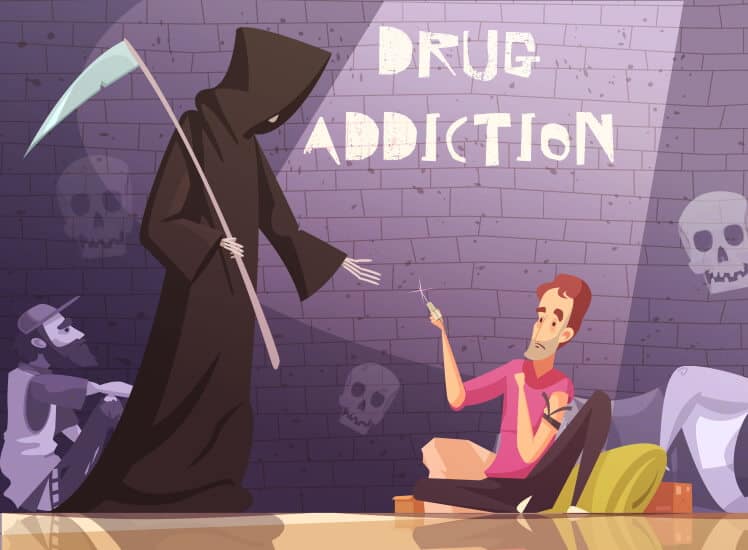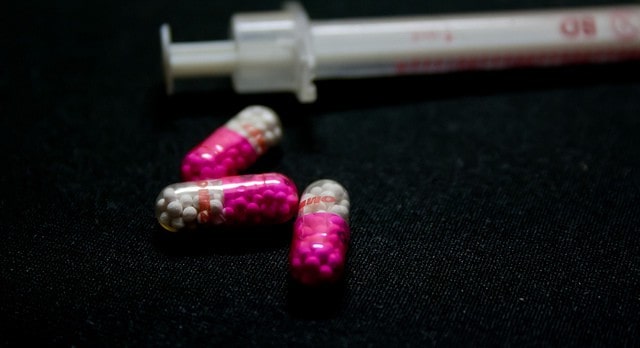The Risks and Why Some People Are More Likely To Become Drug Addicts Than Others
Drugs are more available than in the past
Undoubtedly the war on drugs was lost a long time ago. A diminishing UK Police force has led to the increased availability of drugs throughout the country. More and more young people are being offered drugs and for a high percentage this will lead to their lives being seriously impacted and even destroyed.
Drugs can be mixed and contaminated with many other substances

All drugs can be easily “cut” with a variety of different substances. This means that drug dealers will add other drugs or non-intoxicating substances to the drug so they can sell more of it at a lesser expense to themselves. It lowers the purity of the drug which means that in this day and age individuals have absolutely no idea what they are sniffing up their nose or injecting into their body or inhaling into their lungs. One thing is for sure, the chances are that you will meet an old alcoholic, but you will not meet an old in age heroin addict.
No drug now is ever sold pure. The content of what you think you are buying may be as low as just 3%. Common agents that dealers use to cut heroin and cocaine with are
- Baking soda
- Starch
- Rat poison
- Powdered milk
- Talcum powder
- Crushed up over the counter painkillers
- Laxatives
- Laundry detergent
These all come in a white powder form which easily mixes in. Each may be dangerous when taken into a human body. For example, small particles of laundry detergent can build up in the arteries and cause dangerous blockages in the heart, brain or liver.
Not long ago in America it was found that 73 % of all cocaine tested was cut with Levamisole, which is a cattle dewormer and when taken by humans severely depletes white blood cells. The person buying a drug doesn’t think of these things, all they want to do is to experience a high, however short that may be.
There is more pressure these days for people to try drugs
The road to becoming drug dependent will be different for everyone. The availability and accessibility of drugs is probably the highest it has ever been. People often voluntarily decide to use a drug, choosing to experiment to see what effects certain drugs have on them. There is also peer pressure within groups of both male and females to try various drugs. Where it goes wrong is the thought that “it’s OK, I will be able to stop whenever I want to and its only at the weekends.” This may be true for some people but is certainly not for everyone.
Many people want to re-experience the feeling that the first drug use brought them
Drugs change the brain in such a way that, for some, it makes stopping very hard. Most drugs will give the user feelings of euphoria and the brain will produce more dopamine. These feelings will subside quite quickly and to recreate them we will use the drug again and again. Eventually, the body becomes tolerant to the drug and there will be the need to use more of the drug in order to get a “high.” At the same time the brain starts to reduce the levels of dopamine that it has been producing which in turns also reduces the level of a “high”. The body has become used to the drug as we have become addicted to it and it has already started damaging all of our life areas in a way that makes our life and behaviour dysfunctional. Ultimately, we neither derive pleasure from the drug we are using or other things we once enjoyed such as food, sex, relationships and social activities. Despite recognising the downward spiral ourselves, or being told of how we have changed by a loved one, we will continue to use, which in itself is the nature of drug addiction.
Some people are more prone to addiction than others
One of the most common questions that we are asked at Haynes Clinic is “why me?” There is no one factor that will predict if a person will move from the recreational use of drugs to develop a drug use disorder. Some drugs, such as Crystal Meth, are more addictive than others and can become addictive after a few uses. Others can be addictive very quickly but depending on the individual – some are more affected than others.
Environment: this can be a factor which includes many different influences from family and friends to economic status and general quality of life. Factors such as peer pressure may lead to using but it should be noted that not everyone in that peer group will end up with an addiction. Exposure to drugs at an early age and physical and sexual abuse can also greatly affect a person’s likelihood of drug use and subsequent addiction.
Development stage / age of first use: although taking drugs at any age can lead to addiction, the earlier that the drug use begins, the more likely it will progress to addiction. This is particularly problematic for teens, because areas of their brains are still developing that control decision making, judgement, and self-control and teens may be especially prone to taking risks that include trying drugs. In addition, if teenagers start using drugs heavily before their brains are fully developed, their brain development can be affected, leaving them emotionally immature for many years to come. Sometimes this damage can be permanent.
Biology: the idea that addiction is in some way associated with our genes and could be therefore inherited has yet to be proven, though there is some evidence with alcoholics present within generations of the same family. Gender and ethnicity may also influence who will develop a drug addiction.
Drug addiction can be treated and overcome
The good news for drug addicts is that addiction is treatable and can be managed by abstinence. However, a relapse will occur if we decide that reverting back to our old addictive thinking and behaviour is an all-right thing to do. Just trying ‘one hit’ can lead us back into our addiction full on. To move forward on a “Road to Recovery” from our addiction it is necessary to make and maintain changes. We also need to set boundaries in order to get a life away from the destructive and potentially deadly effects of drug addiction.



